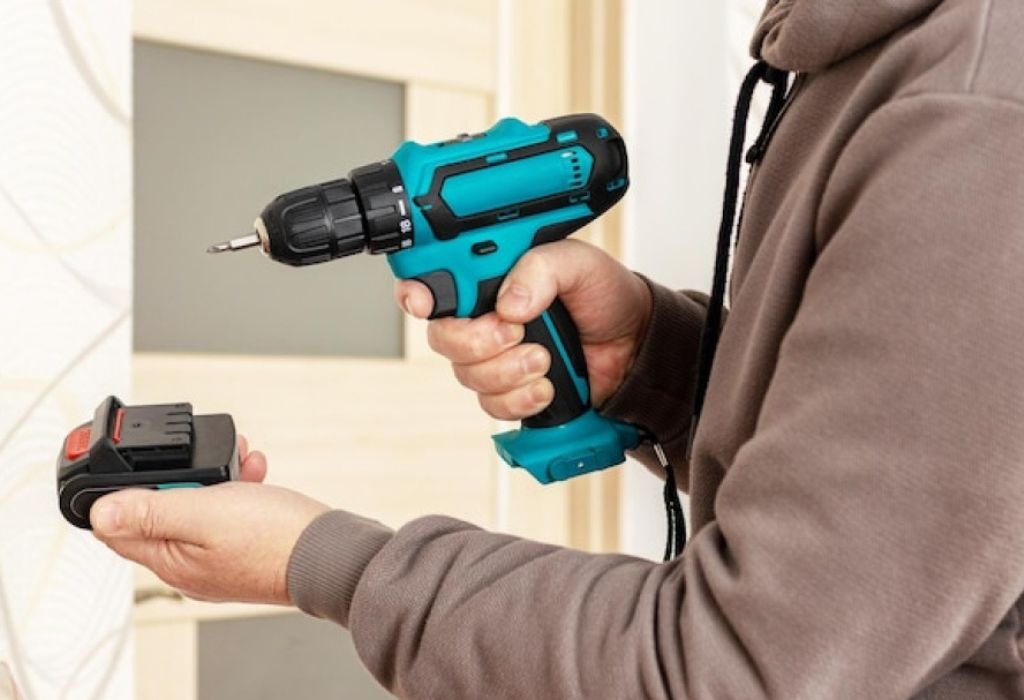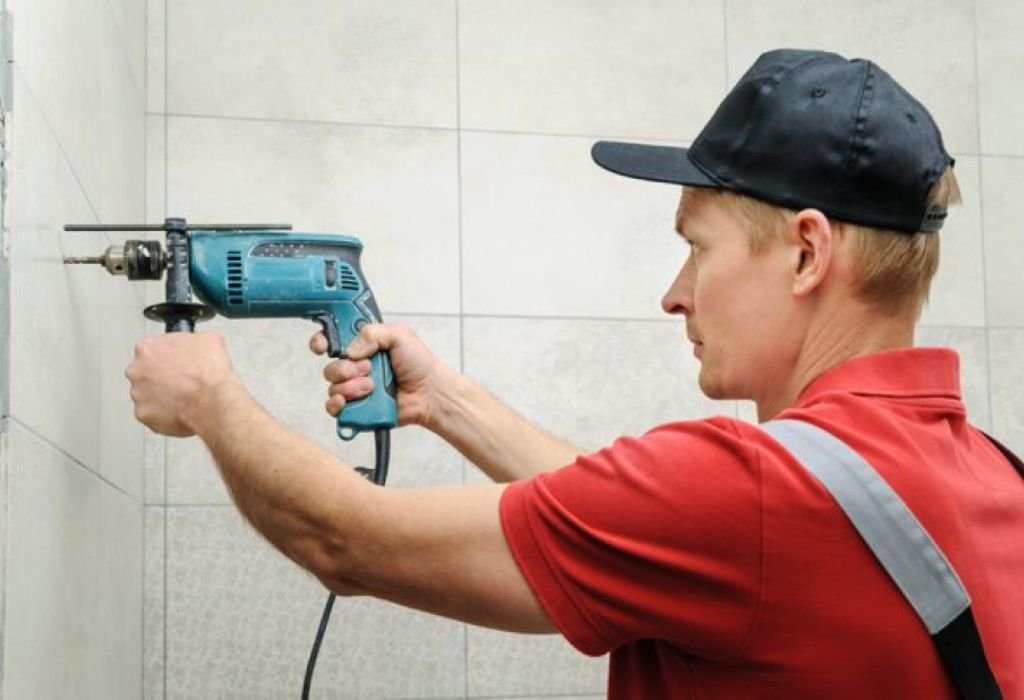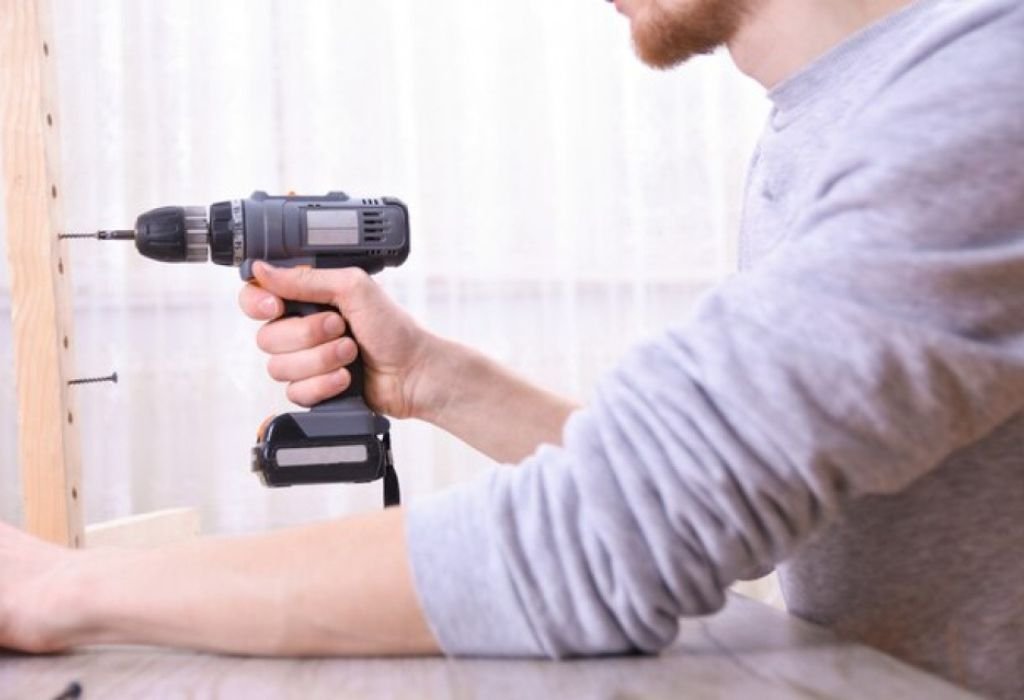A weekend project often begins with excitement until the first hole meets the surface of a brick wall. The tool in hand may be an impact driver, but the job requires more than torque.
This raises the common question: can an impact driver drill into brick effectively? Many attempt it out of curiosity or necessity, often ending in cracked bricks or wasted bits.
Understanding the tool’s limits prevents damage and ensures anchors hold securely. A hammer drill may be the better choice, but with the right bits and method, even an impact driver can sometimes succeed.
Safety makes the discussion more urgent. Nearly half of serious eye injuries happen at home, often during drilling or cutting tasks (source).
OSHA also limits exposure to crystalline silica dust at 50 μg/m³ over an eight-hour day (source).
Exploring the differences, techniques, and safety measures helps clarify when an impact driver can be used on brick and when to choose a better tool.
DIY tasks often look simple until brick is involved, and poor tool choices can quickly turn minor jobs into expensive repairs.
With careful planning, even the wrong tool can sometimes achieve the right result if limits are respected.
This guide explores those limits, offering clarity so homeowners can avoid costly mistakes while still completing projects with confidence.
Quick Answer — Can an Impact Driver Drill into Brick?

An impact driver can drill into brick, but it is not the recommended tool. It works only in limited situations with the right bit and shallow depths.
With a carbide-tipped masonry bit, slow speed, and steady control, small holes can be created in softer brick. For deeper or larger holes, a hammer drill is far more effective.
Using an impact driver for brick drilling is always a compromise. It can be done, but efficiency and reliability will never match that of a hammer drill.
For occasional or emergency use, it is an option, but frequent masonry work calls for investing in the right tool.
Can an impact driver drill into brick?
Yes, but it is best for light, shallow holes in softer brick.
Is a hammer drill better for brick?
Yes, because it combines rotation and hammering force for faster, cleaner holes.
When is an impact driver a bad idea?
It struggles with deep holes, large diameters, or hard engineering brick.
Do you need special bits?
Yes, only carbide-tipped masonry bits should be used.
Should you drill into brick or mortar?
Mortar is easier, but brick holds anchors more securely.
Impact Driver vs. Hammer Drill — How They Work
An impact driver delivers rapid bursts of torque to drive screws efficiently. It is built for fastening rather than grinding through masonry.
A hammer drill adds forward hammering action while rotating, allowing the bit to chip away at brick as it spins. This creates smoother, faster holes.
The difference is evident when drilling. An impact driver may manage one or two shallow holes, but a hammer drill sustains performance without overheating bits.
For regular tasks or professional use, a hammer drill is more efficient. It ensures cleaner holes and stronger anchor retention in brick.
In many cases, comparing these tools is not just about capability but also efficiency. A hammer drill completes the same hole in a fraction of the time.
Overworking an impact driver on masonry can shorten tool life, dull bits prematurely, and leave users with unsatisfactory results.
What’s the main difference in force?
A hammer drill adds in-line hammering, while an impact driver adds rotary torque bursts.
Which gives cleaner holes in brick?
Hammer drills and rotary hammers produce rounder and cleaner holes.
Can adapters make an impact driver work like a drill?
Hex-shank masonry bits fit, but the mechanism remains unchanged.
When should you upgrade to a rotary hammer?
Use it for large diameters, deep holes, or very hard masonry.
Is torque the deciding factor?
Torque helps, but hammering action is the true advantage in masonry.
When Using an Impact Driver on Brick Makes Sense
There are times when using an impact driver on brick can be acceptable. Light projects such as hanging small fixtures or outdoor brackets may not require a hammer drill.
Softer or older bricks allow easier penetration. In such cases, an impact driver with a masonry bit can complete the job if patience is applied.
In occasional one-off jobs, the cost of buying or renting a hammer drill may not feel justified. Here, an impact driver can fill the gap, provided the user accepts slower performance.
Still, using an impact driver for masonry should be seen as a temporary solution. For repeated drilling into brick, switching to a hammer drill is always the safer investment.
What hole sizes are realistic?
Small diameters for light-duty anchors.
How deep can you go?
Shallow depths matching small wall plugs.
What brick types are friendlier?
Softer or porous bricks, not hard engineering brick.
What if the hole is ragged?
Switch to the proper tool or oversize the plug.
What’s the time penalty?
Expect slower drilling compared to a hammer drill.
Tools, Bits, and Accessories You’ll Need
To attempt drilling with an impact driver, the right accessories are essential. Masonry bits with carbide tips and hex shanks are the most important.
Additional items include wall plugs, anchors, a depth stop or tape marker, safety glasses, dust mask, and a vacuum for cleanup.
Accessories are not optional in masonry drilling. Without the right bit, anchors, and dust protection, even the best driver cannot complete the job.
Choosing quality bits over cheap ones reduces frustration. A single durable carbide bit often outlasts several budget alternatives.
Which masonry bit tip is best?
Tungsten carbide tips resist heat and abrasion.
Do hex-shank masonry bits help?
Yes, they fit securely in impact drivers.
Wall plugs or sleeve anchors?
Match to the weight and size of the load.
Do I need a depth stop?
Yes, to avoid drilling too deep.
Is brushless motor worth it?
Yes, for longer runtime and precise control.
Step-by-Step — How to Drill Brick with an Impact Driver

Mark the drilling point with a pencil or marker. Place painter’s tape over the spot to reduce wandering.
Start at a slow RPM to create a pilot. Keep the bit perpendicular and increase pressure gradually.
Clear dust frequently using a brush or vacuum. Pausing prevents overheating and keeps the hole clean.
After reaching depth, test-fit the anchor or plug. Clean the hole once more before final installation.
Patience is the key when drilling brick with an impact driver. Rushing increases heat and raises the risk of chipping the surface.
Even with careful technique, drilling will take longer than with a hammer drill. Planning extra time ensures better results.
What RPM should you use?
Use the lowest speed that still cuts effectively.
How often to clear dust?
Every few seconds on deeper holes.
How to reduce heat?
Work in short bursts and cool the bit with water if needed.
Why does the bit wander?
Hard surfaces cause skating; use a punch or tape to guide.
Hole too tight?
Lightly ream but avoid forcing the bit.
Bit Selection, Size, and Speed Tuning
Correct bit size ensures anchors grip firmly. Using undersized bits risks anchor failure, while oversized holes lead to plugs that spin loosely.
Slower RPM reduces heat and prevents glazing on the carbide tip. Following anchor manufacturer recommendations gives the most reliable results.
Carbide-tipped bits are mandatory for masonry. They withstand abrasion and heat far better than high-speed steel bits.
A hex shank provides stability in an impact driver, while round shank bits are designed for three-jaw drill chucks. Choosing the wrong shank reduces accuracy and increases bit slip.
Carbide vs. HSS?
Carbide is the only suitable choice for masonry drilling.
Why low RPM matters?
It prevents overheating and extends bit life.
What’s blow rate/BPM?
It applies to hammer drills, not impact drivers.
Hex vs. round shank?
Hex works best in impact drivers, while round shank suits drills.
When are multi-cutter bits worth it?
They improve cutting efficiency in hard brick.
Anchors and Load — Getting a Safe Hold
Anchors must match the hole size and expected load. Brick provides stronger holding strength than mortar when drilled correctly.
Plastic plugs, sleeve anchors, and masonry screws are the most common choices for mounting items on brick walls. Each requires the right pilot hole for reliable results.
Placing anchors too close to edges can weaken the brick and cause spalling. Keeping a safe distance preserves the wall’s structural strength.
Correct depth ensures maximum grip. If a hole is too shallow, the anchor may not seat firmly, and if too deep, the plug may spin freely.
Which anchors suit small holes?
Nylon plugs and masonry screws work best.
Do masonry screws need pre-drilling?
Yes, always drill the correct pilot size.
How close to an edge?
Maintain distance to prevent cracking.
Brick vs. mortar for load?
Brick is stronger and provides secure anchoring.
What if brick is very hard?
Switch to a rotary hammer for success.
Safety, Dust, and PPE
Drilling into brick releases chips and dust that can damage eyes and lungs. Proper protective gear is essential for safety.
ANSI-rated safety glasses should be worn every time. A dust mask or respirator prevents silica exposure during drilling.
Wet drilling or attaching a vacuum reduces airborne dust. These methods keep holes cleaner and anchors more secure.
Noise is another concern, as impact drivers and hammer drills both generate loud operation. Hearing protection reduces long-term risk.
Do you need safety glasses for one hole?
Yes, debris can cause injury instantly.
Is wet drilling OK for brick?
Yes, it reduces dust and heat.
What respirator rating?
P100 or N95 minimum is recommended.
Vacuum while drilling?
Yes, it clears dust and keeps holes clean.
Gloves or no gloves?
Wear snug gloves, not loose ones.
Troubleshooting Common Issues
Common problems include dull bits, wandering starts, and ragged holes. Most issues stem from rushing or using incorrect technique.
Overheating is another frequent issue. Working in short bursts and cooling the bit prevents damage.
Anchors that spin inside holes signal an oversized bore. The fix is either a larger anchor or adhesive epoxy for reinforcement.
Surface chipping can ruin appearance. Using painter’s tape or a punch mark reduces the chance of breakage at the hole’s edge.
Why won’t the bit cut?
It is dull or overheated.
Hole keeps widening?
Too much pressure causes chatter.
Anchor spins?
The hole is too large; use epoxy or bigger plugs.
Brick face chipped?
Start slower and prepare the surface.
Battery dies fast?
Heavy load drains power quickly.
When to Stop and Switch Tools
Impact drivers can only handle so much before becoming inefficient. If progress is slow or holes look ragged, a switch is necessary.
Hammer drills provide better balance between speed and hole quality. For deeper or larger holes, rotary hammers excel with SDS bits.
Renting is often more cost-effective than forcing an impact driver through multiple holes. Tool rental saves wear and ensures better results.
Knowing when to stop protects both the tool and the wall. For repeated masonry work, investing in the right drill is unavoidable.
Rule of thumb for switching?
Stop if the bit stalls after 10–15 seconds.
What tool next?
Hammer drills for general use, rotary hammers for heavy work.
Cost vs. renting?
Renting often saves money.
Will a regular drill work?
Yes, but it is slower and harder on bits.
Do impact settings help?
No, they cannot replace true hammering action.
Time, Cost, and Outcome Comparison

An impact driver drills slower, wears bits faster, and produces less reliable holes. Hammer drills are faster and cleaner, while rotary hammers dominate tough brick.
Time saved with the right tool can outweigh the purchase cost. Anchors also hold stronger in properly drilled holes, avoiding costly repairs.
Brushless motors help with runtime and efficiency but do not replace hammer action. Quality bits and the right tool choice provide the best return on effort.
A simple comparison makes the choice clear. For light one-off holes, an impact driver might work, but for consistent results, hammer drills remain the standard.
Is buying a hammer drill worth it for 4 holes?
Borrow or rent instead.
Will cheap bits survive?
No, they fail quickly under stress.
Brushless = faster holes?
It helps with consistency, not raw speed.
Maintenance — Caring for Bits and Holes
Carbide bits need cooling and regular cleaning to stay sharp. Storing them dry prevents rust and wear.
Vacuuming holes after drilling ensures anchors grip properly. Dust buildup reduces load-bearing strength.
Replacing bits at the first signs of wear avoids poor hole quality. Dull tips risk overheating and damaging brick.
Outdoor holes should be sealed after drilling. This prevents water ingress and long-term weakening of the brick.
How to cool bits safely?
Dip briefly in water between passes.
How often to replace?
When carbide tips show wear or chipping.
Why blowout matters?
Dust reduces anchor grip strength.
Lubricants?
Not needed for masonry.
Seal holes outdoors?
Yes, always use exterior-grade sealant.
Conclusion
So, can an impact driver drill into brick? The answer is yes, but only for shallow and light-duty holes using proper masonry bits.
For serious masonry projects, a hammer drill or rotary hammer is the right choice. Using the proper tool protects your brickwork and ensures strong, safe installations.

I’m John F. Nicholas, the founder, lead writer, and drill enthusiast behind 101drill.com. With years of hands-on experience in power tools and DIY projects, I created this platform to share practical knowledge, expert tips, and real-world insights to help others master the art of drilling.
